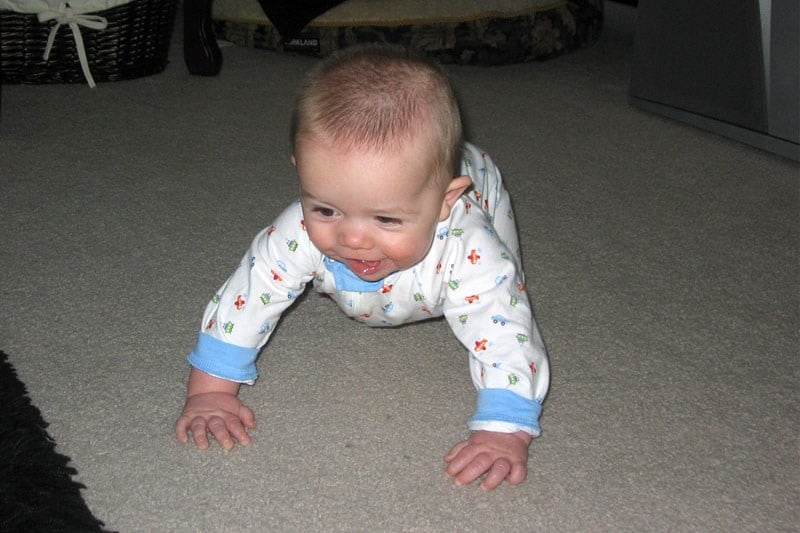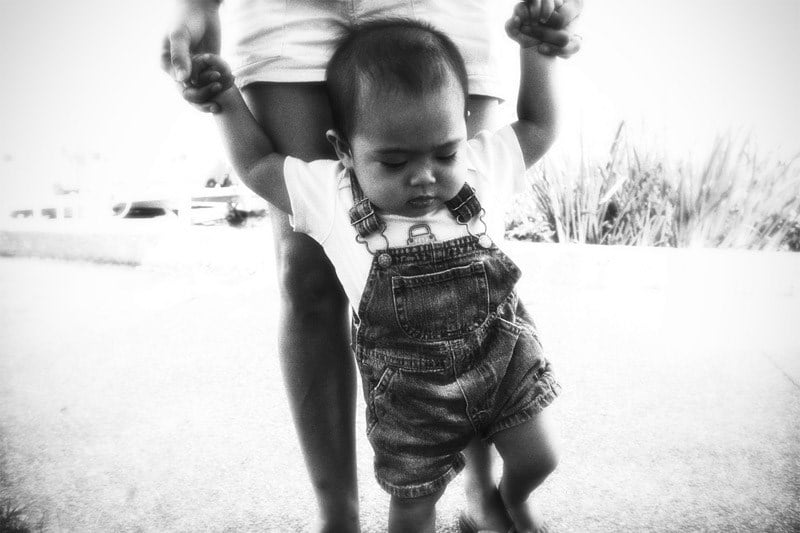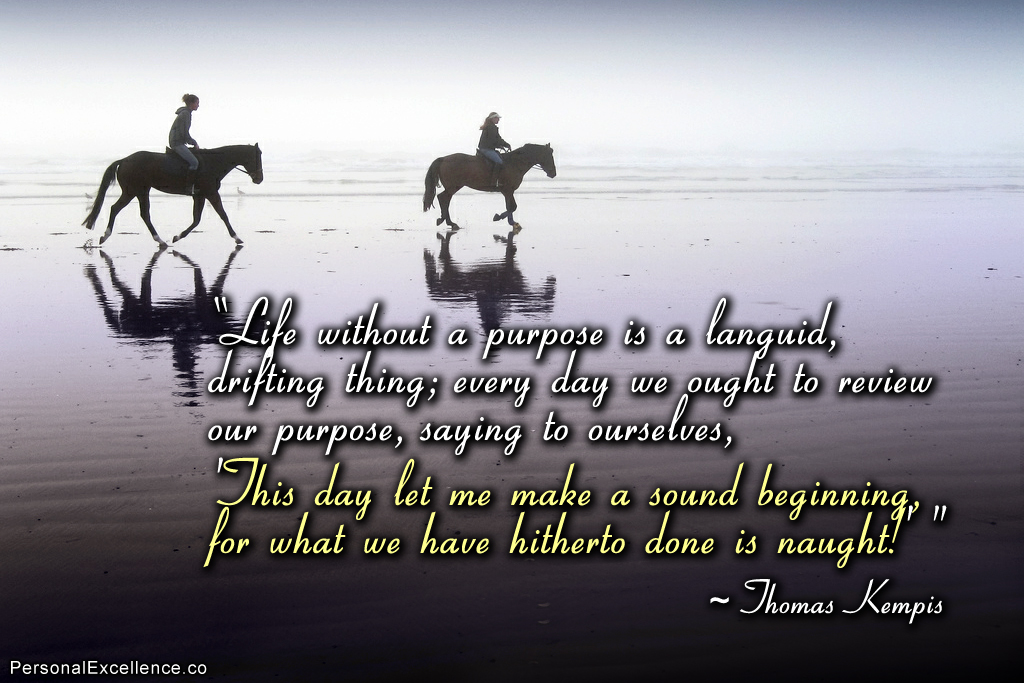
(Image: Flickr)
Have you ever seen a baby learn to walk? Most babies take their first steps between 9 and 12 months old, and walk by the time they’re 14 or 15 months old.[1] Some babies take longer, walking only when they’re 17 months old, though it doesn’t mean there’s anything wrong — it’s simply different babies needing different time for development.
Imagine you have a baby (if you are a parent, no imagining needed) and he’s now 9 months old. You support him as he learns to walk — first holding his hand, then letting him walk with support, and then slowly letting go. But every time you do the last step, he stops, wobbles, and falls.
What do you do now? Do you continue supporting him? Or do you stop trying? How many chances do you give your baby before you say, “That’s it, ENOUGH. You’ve had your chance, I’m not giving you any more tries!”
You’re probably going, “What, are you CRAZY? Of course I’m going to let my baby keep trying until he walks! He’s going to try for as many times as he needs, for as long as it takes!“
So why is it that so many of us don’t do the same thing for our goals?
***
I first heard this baby-walking analogy from a Jim Rohn clip years ago. The message is that none of us, as the parent of our child, would ever give up on our baby as he learns to walk, no matter what happens.
“How long should a baby try to learn how to walk? How long would you give your average baby before you say ‘enough…!’? Any mother would say ‘you’re crazy, my baby is going to keep trying until it learns!’” — Jim Rohn
Why? Because that’s our baby we’re talking about. Whether he (or she) takes a long time to walk is irrelevant. What matters is that we keep supporting him, period. Even if he doesn’t show any improvement for months, we will just keep trying and pushing forward. Right to the day he walks, after which we’ll celebrate his success.
Yet when it comes to our goals, many of us are ready to throw in the towel — sometimes after just 1-2 months of trying. For example, losing weight, being healthy, pursuing our passion, starting our business, finding our ideal partner, and building our blog. For others, it’s worse — we give up before we even start!
What Helped Me Pursue My Passion Without Reservation
One of the defining moments that helped me plunge headfirst into my passion was when I asked myself, “What do I want to be doing five years from now?”
At that time I was still in my day job and had been working for two years. My answer then was, “I want to be pursuing my passion and raising the consciousness of the world. Not what I’m doing now.”
However, a key block preventing me from moving forward was not knowing what to do if I didn’t succeed — and after quitting my day job no less. Embarrassment and scrutiny by others aside (which were lesser issues to be honest), I felt that I would have jeopardized my professional career path since I would have quit my job after only two years into the role. By then, I would be in a deadlock where not only did I not succeed in my passion, but I would have also thwarted my career development path (compared to if I didn’t quit).
The thought of failure was paralyzing. As much as I wanted to pursue my passion more than anything, I couldn’t guarantee its success since I don’t control the world. There’s no way I’m going to quit my job with these huge possible downsides, I thought. I didn’t believe in those “Just do it!” motivational ra-ra spiels either as I don’t believe in taking large risks without first having a plan.
As it turned out, the solution was quite simple and required a simple perspective shift.
So I thought, Okay, what if the worst-case scenario happens? What if I quit, spend a year or two working on my passion, use up all my savings, and make no headway? While I can keep pushing myself forward, how am I supposed to survive without money?
My answer was to logically return to the corporate world to earn more money.
…And then what? What’s next? Do I remain in the corporate world and continue working there? I thought.
No, of course not! was my immediate reply. I would just work for one to two more years (or however long needed) to accumulate some savings. And then when I earn enough to sustain myself for one to two years, I would quit again to pursue my passion at full throttle. While I’m at my day job, I could still work on my business part time so that it wouldn’t be at a standstill.
If I ran out of savings again after quitting, I could simply repeat the cycle of working to accumulate cash. And quit *again* one to two years later to pursue my passion fully. And rinse and repeat until my passion takes off.
Bingo. Here was the answer all along. What liberated me was seeing my passion not as a one-off pursuit, but as a process to be undertaken. Rather than think about it as something I needed to succeed in in 1-2 years, I should see it as a lifelong journey, with quitting my corporate job as the first step to making it happen. It’s a process, not a race. And from there, work on my passion for as long as it takes, until it takes off and beyond.
(I’ve documented my passion journey in my passion series. In short, I’ve since turned it into a full-time career, turned my blog into one of the top personal development blogs in the world, and achieved financial freedom by turning PE into a passive-income business in 2012.)
Your Goal = Your Baby
Now, let’s return to the baby-walking example. The point is that when it comes to our baby, we will do everything in our power to help him. We don’t give up just because he isn’t walking after X weeks, months, or even years. All that matters is that we devote ourselves to supporting our baby to walk, for as long as it takes.
This is the same for any other skill that our baby learns, be it to eat, talk, count, kick, or throw. No parent says, “That’s it, no more chances!” when their baby doesn’t do any of these things successfully after one, two, three, or five tries. That’s just silly. We do whatever it takes, and give our baby as many tries as he needs, to finally do it.
Similarly, with our goals, it’s about nurturing them and giving them time to blossom. Trying different things to achieve each goal. Trying all sorts of ways to tackle the obstacles. Doing this for as long as it takes, until we succeed.
Spend “As Long As It Takes” To Make Your Goals Happen
Now, perhaps you have pursued one or more of the following before, with limited success:
- Lose weight
- Eat healthy
- Stop stress eating
- Quit smoking
- Quit drinking
- Start a blog
- Start a business
- Pursue your passion
- Switch to a new career path
- Complete your diploma/degree/masters/PhD
- Improve your relationships
- Improve your family relationships
- Find your soulmate
- Achieve a professional milestone
- Any other goal
Some of us may have given up on these goals. That’s fine. If there are goals that don’t fit our purpose or values, or if there are goals that are taking more effort than what they mean to us, then we should drop them for sure.
However, if these are goals important to us, that will make a permanent difference in our lives… then we really shouldn’t give up. Because the worthiest of goals don’t get accomplished in the first try. In fact, the worthier and grander the goal, the more resistance we’ll face, and the more time and effort we need to put in to ensure their success. This is where designing a plan, crafting a strategy, coming up with a counter-plan for the obstacles, and creating an action plan are critically important. By pursuing our goals deliberately and consciously and giving them our undivided time and attention, it is a matter of time before they take off.
After all, which of us managed to walk flawlessly when we were a baby, without wobbling, stumbling, or falling in our first try? Probably none.

A baby’s first step. Do you remember yours? (Image: Flickr)
So, why should we expect our goals to take off in our first try?
Just like how a baby is expected to wobble, stumble, and fall in his first few attempts to walk, we shouldn’t be shocked or dejected when we wobble, stumble, or fall when pursuing our goals. Rather, we should realize that wobbling, stumbling, or falling is the norm, and instead devote our time and energy to succeed.
Let’s give our goals the chance they deserve. Let’s not give up on them and declare them “unachievable” when they’ve simply required more time and energy than what we’ve put in. For the most important of goals and dreams — such as reaching our ideal weight, being a healthy eater, turning our passion into our career, fostering the most important relationships of our life, finding that ideal relationship partner, and achieving a personal or professional milestone that is important to us — sometimes, “as long as it takes” may well be the length of time we need for them to eventually take off.
For tips on taking your goals to completion:









 Thanks for reading. If you like my free articles, join my private email list and get my latest updates and articles sent right to your inbox.
Thanks for reading. If you like my free articles, join my private email list and get my latest updates and articles sent right to your inbox.